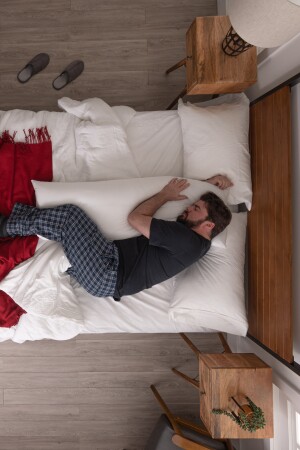If you love the smell of freshly cleaned sheets, you might also be the same person who is diligent about using dryer sheets for each load of laundry, always makes your bed, and sticks to a religious bed sheet washing schedule.
On the other hand, for some, washing bed sheets is a dreaded task a lot like flossing. We know we should be doing it, but only remember when we visit the dentist.
If you are one of those people who can't recall the last time you washed your bed sheets, we have some advice on when and why you need to add washing the sheets to your to-do list.
Establish a Clean Bed Routine.
How often you wash your sheets may seem like a personal choice based on lifestyle and schedule, but that is not the case. Like flossing, it's something you should be doing on a routine basis as part of a healthy lifestyle, not just when the dentist reminds you.
So, what is the magic number of how often you should wash your sheets? Experts say a good rule of thumb is every 1-2 weeks.
Consider Other Factors.
When it comes to evaluating when to toss the bedding in the wash, it's important to take into account factors such as weather, sleep schedule, and illness. During the summer and spring months, you may sweat more during the daytime given the warm weather, which easily transfers to your sheets.
If you struggle with seasonal allergies, it is recommended for you to change your sheets more often during these months since pollen and other allergens have a tendency to linger on bedding. One way to eliminate extra dander buildup is to add a hot shower to your bedtime routine each night.
Another consideration on how often you wash your sheets is whether you sleep alone or with a partner, or a pet. While we love to snuggle up with our kids and furry friends, this is another sign you should be washing your bedding more frequently.
Wash More than Just the Sheets.
It's also important to remember that you should be washing ALL the bedding, not just your sheets. This includes all pillows, duvet covers, pillowcases, mattress protectors and blankets.
While it's easy to make excuses for your fancy throw pillows that are dry clean only, these do get dirty, even if you aren't sleeping on them every night. The same goes for your duvet cover, which can easily gather dust and bacteria, even if you leave it folded at the end of the bed.
Keeping your bedding fresh and clean will also stretch your dollar in the long run. Infrequent cleaning of sheets and pillowcases allows bacteria and bodily fluids such as sweat to seep into your pillows and mattress. This may result in needing to pay for special mattress cleaning treatments and bedding replacements more often. If you do need to replace some of your bedding check out our Mattress Firm products at a store near you.
A good way to protect your pillows and bed is to make sure to invest in mattress protectors and covers. Make sure you are also washing these items with your sheets to keep them fresh and clean in order to maintain the quality of your mattress for years to come. If you have questions about how best to prolong the life of your mattress and bedding just ask a Mattress Firm employee to share some of our helpful tips.









